Yet another local landmark was recently torn down and wiped from the face of the Earth. Recently, for me, at least. In August, Tonya and I were driving to Moab from Monticello, on US 191, for the first time in a few months. As we approached La Sal Junction, I noticed that something was terribly wrong— The La Sal Jct Store/Station & Cafe was gone. There wasn’t a trace of it. All the buildings and outbuildings had been demolished and their remnants hauled away. Even the trees had been removed. It had all been replaced by a very large “FOR SALE” sign, promoting the availability of this 64 acre commercial lot.
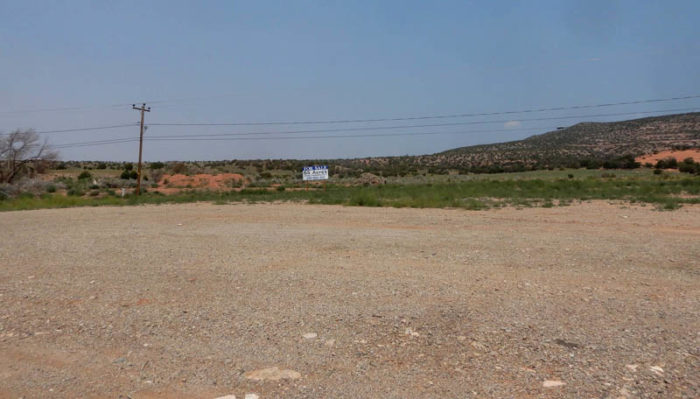
It’s true that the La Sal Jct. structures had been abandoned and in a state of decay for decades. They were like familiar ghosts —reminders of another time and another world — that we all know is fading away. But they were friendly ghosts. I’m sure the old buildings no longer bore any economic value, but It was somehow comforting to see their skeletal remains whenever I drove the road south, so many hundreds of times over the last 40 years. To see them obliterated was like seeing its history and its soul taken away as well.
But I’m wrong. The vivid details and the recollections are all still there. Last month, I posted one of the photographs included here on a facebook page dedicated to those kinds of memories, and dedicated to the residents of Moab and Southeast Utah who remember “the way it was.”
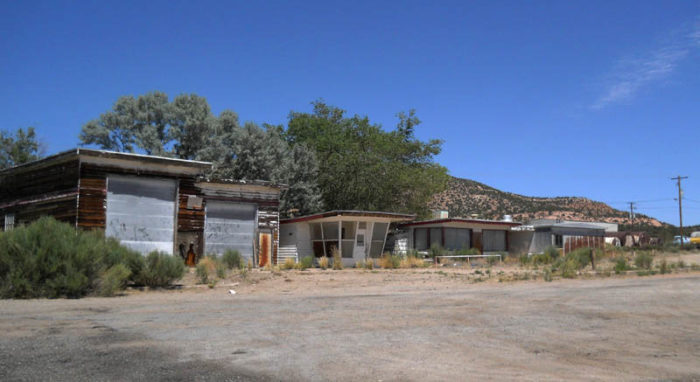
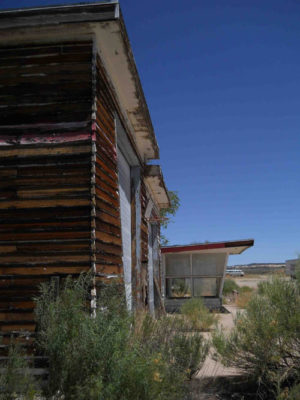
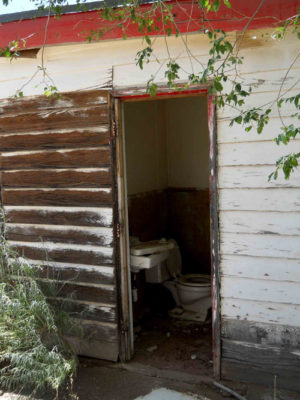
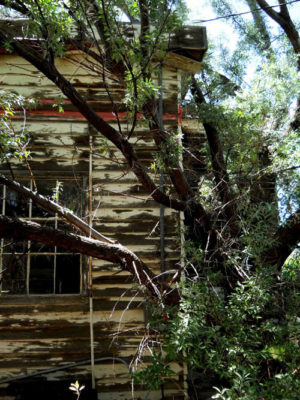
The responses to that photograph, and there must have been a hundred of them, were rich and full, mostly happy and comforting. La Sal Junction was a gathering place for so many of the miners who worked long shifts at Rio Algom and Atlas and the other mines. Workers often stopped there for coffee at the end of their day, to socialize and to share their day’s travails and triumphs.
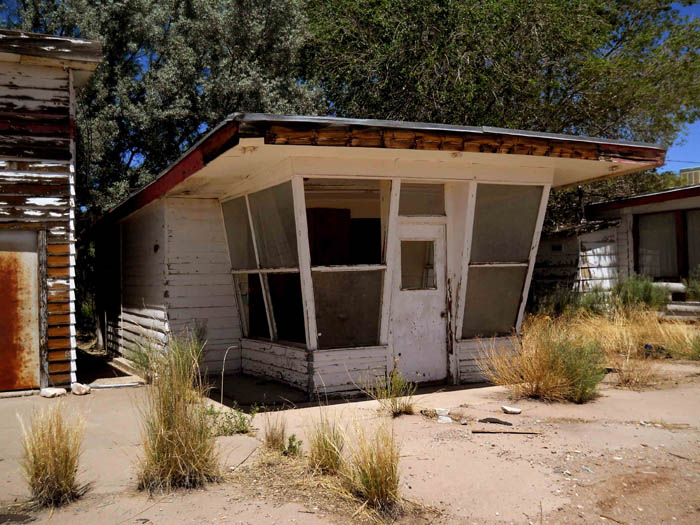
It was Ken McDougald, who bought the land and built the La Sal Jct store in the early 60s. McDougald was born and raised in Moab, served in WWII and in the early 50s, started his own petroleum distribution company. McDougald Oil and Charlie Steen’s uranium discovery came at almost the same time and both men benefitted from each other’s enterprises. Some say that McDougald built the store/cafe’ specifically to provide a stopover for all the men who worked in the Lisbon Valley area, but it served so many others as well.
Two names that often came up in the La Sal Jct comment thread were Vic and Irene Thill. The Thills ran the place in the late 60s and were fondly remembered by so many people who worked there or who just came by for a meal and a cup. Marianne Bowthorpe Pipkin remembered the Thills and recalled the “table juke boxes…on some Friday nights a live band would play in the attached dance hall. Lots of fun.”
Randy Spencer, an old friend who I have not seen in decades, remembered, “I was working there the summer after graduating from high school and got robbed. The sheriff caught them that morning. Drove my first ore truck. Changed many 1022 truck tires. Worked for Vic Thill.”
Bill Partridge remembered that “it was the stop for miners…after work. They all loved the place and told stories. They had a garage there—it was the best truck stop.” Bill remembered that he and his friends would carpool to the job from Moab, and the cafe “would open at four in the morning…lots of old miners that are gone now. Love those times.”
Gene Ciarus “stopped there all the time. Especially when I worked for Rio Algom. Lunch and beer especially after work.”
Marjorie Haun recalled that, “we always stopped at the old store to get Shasta sodas on our trips between Moab and Paradox/Norwood. The mid-century design of that particular building made it unique.”
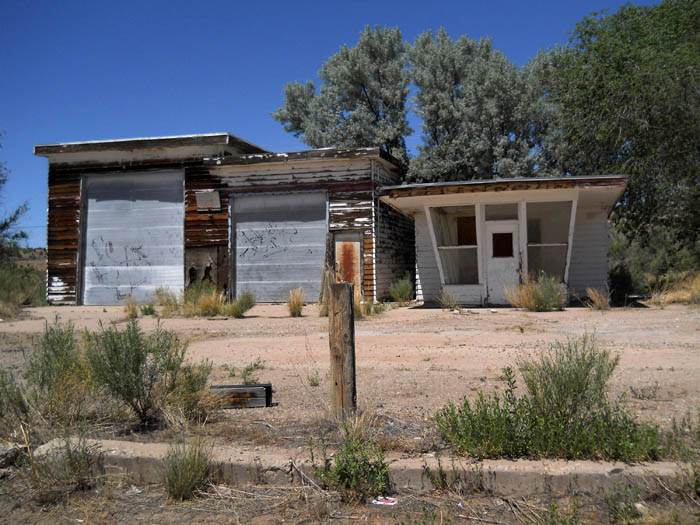
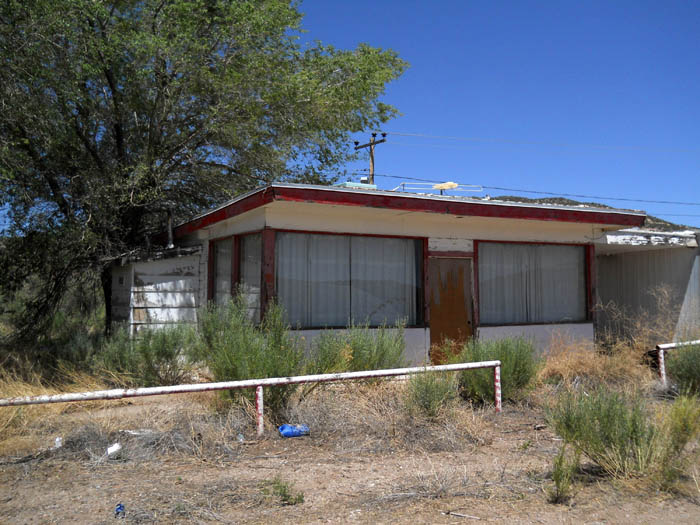
Verlene Butts remembered that Ken McDougald, in addition to building the stores, put an airstrip out back for his plane. That memory jogged another one for Greg Nelson. “I always thought that rolling runway must have been challenging. I remember seeing a small plane upside down on the runway one day, late in the 70s…I think the pilot put a wheel in a prairie dog hole.”
Jan Radcliff added some more details to that “upside down plane.” “My dad ran the gas station and my mom was a waitress at the little cafe. Ray and Barbara Fetters. Another lady, whose last name was White, worked with my mom. Bill’s plane blew UPside down on the runway during a windstorm. Went to school in Lasal. Lived in the old trailer court.”
Gerrie Boggs wrote,
“While testing for my private pilot license, my FAA Examiner George Huber asked me to land on that tiny dirt strip at LaSal Junction….after trying to land for 3/4 of the runway I had to abort. Figuring I’d flunked the test I was amazed when he passed me saying he was testing ‘my judgement rather than flying skills.'”
For Klint Hutton, La Sal Jct was quite a learning experience…
“My brothers & I would go to work out in the Lisbon Valley with my dad in the summer when we were out of school. It was always a great time being around the exploration rigs & Clyde Fritz from Dove Creek who ran the drilling company, He cussed (and I mean CUSSED) worse than a sailor. I would just sit there and grin going ‘Wow- I never heard that one. I will have to investigate the meaning.’ Anyway, we would always stop and eat breakfast on the way out. I thought the Redds owned it near the end. Could be wrong. That was a while ago. I also remember the highway patrol shooting. Can picture the officer’s face. My dad introduced my brothers & I to him. That was a while ago. Time flies when you are having fun eh.”
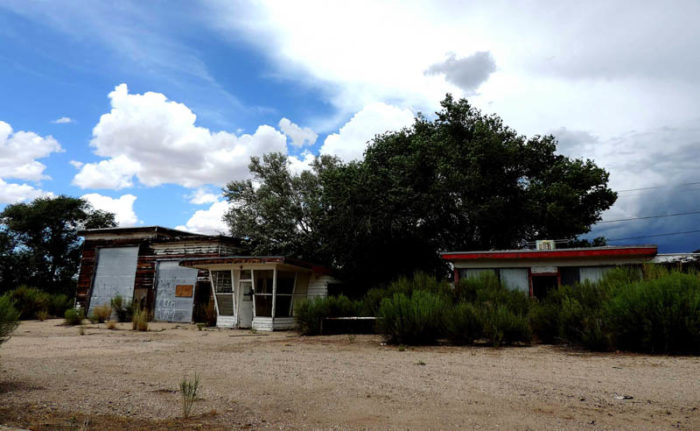
Suzie Axtell “lived out there..in 1962 for 2 years.. moved away and then moved back for a little while…my mom was a waitress at the little diner, there were several trailers there that we all lived in.. and a dirt air strip behind the diner and little gas station. The school bus carried us to La Sal for school. We hiked all over the hillsides. I remember walking across the highway and down into a deep gulley… I remember it being super deep, like a big ravine. I wonder if it was as deep as I remember.”
Loraine Fullmer “worked in the restaurant in 1971. Deputy (Verle) Green came by often. Most of the customers were coffee drinkers going to work at the mines. Rio Algom, Atlas Minerals, Boyle Bros. etc. (spelling might be wrong.) At the time the cafe had a food shortage and I believe I worked for free for a few days. (The manager left without notice). The Thills were running the bar next door on one side, and gas station on the other side.”
For David Wagner, La Sal Jct “was our main coffee stop when hauling ore from the mines. I remember one day a driver (no names) parked out front and went in for a sandwich. As the waitress brought him his order she asked who was driving his truck. He looked out just in time to see his truck roll by, so out the door he ran trying to catch it. Needless to say, he caught up to the trailer but couldn’t stop it. It went down across the highway and into the wash on the other side. He went out the next day and drove it out. They used to have fantastic Biscuits and Gravy there too.”
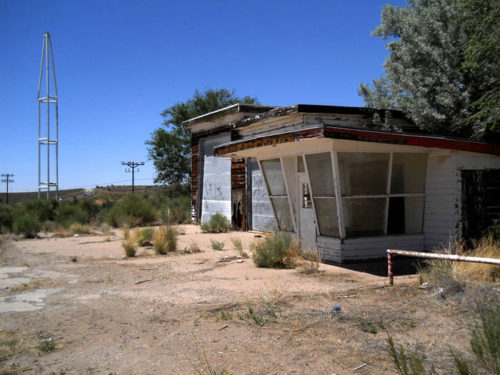
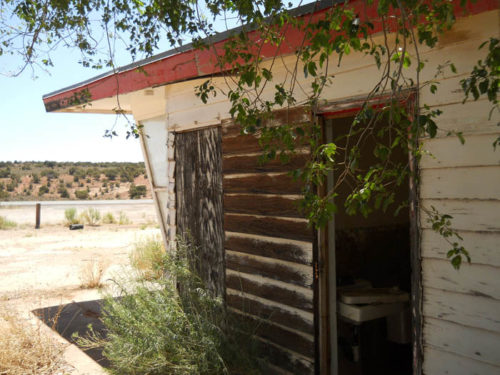
There was also a law enforcement incident in 1971, a deadly one, that deserves more than a passing reference. We will come back to that story soon. But it involved San Juan County Deputy Verle Green and Utah Highway Patrol Trooper Bob Lowe. It’s a hair raising tale that stands on its own. Stay tuned.
Now, after more than half a century, the buildings are gone, their remnants hauled away to a dump, and what awaits that location in the future is anybody’s guess. But the memories still remain, as clear as the day they were made, for the people who loved La Sal Junction, the people who worked there, and the friends that gathered each day, so many years ago.
NOTE: Irene Thill wrote two articles for The Zephyr in the early 2000s (posted below). She died in 2008.
Jim Stiles is Founding Publisher and Senior Editor of the Canyon Country Zephyr.
To comment, scroll to the bottom of the page.
Zephyr Policy: REAL NAMES ONLY on Comments!
Don’t forget the Zephyr ads! All links are hot!


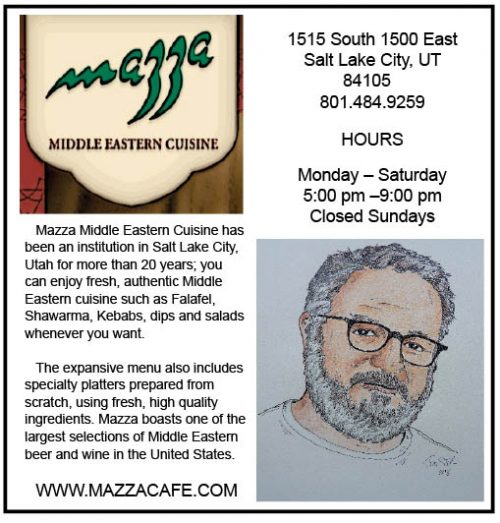
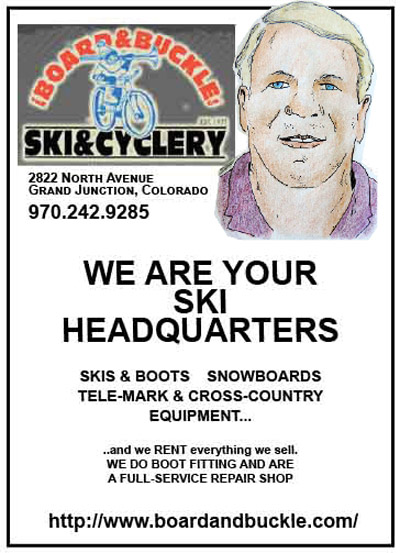

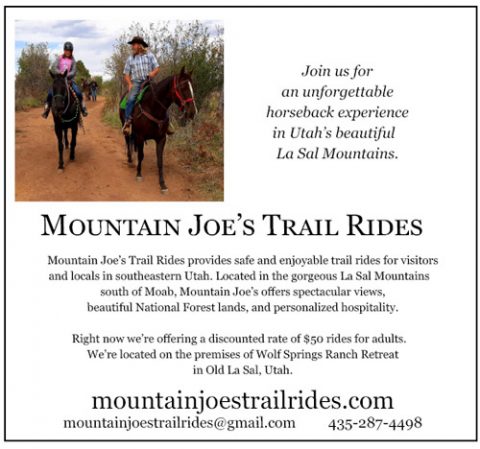
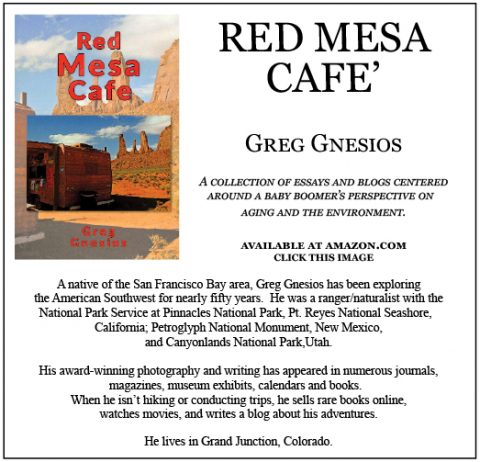
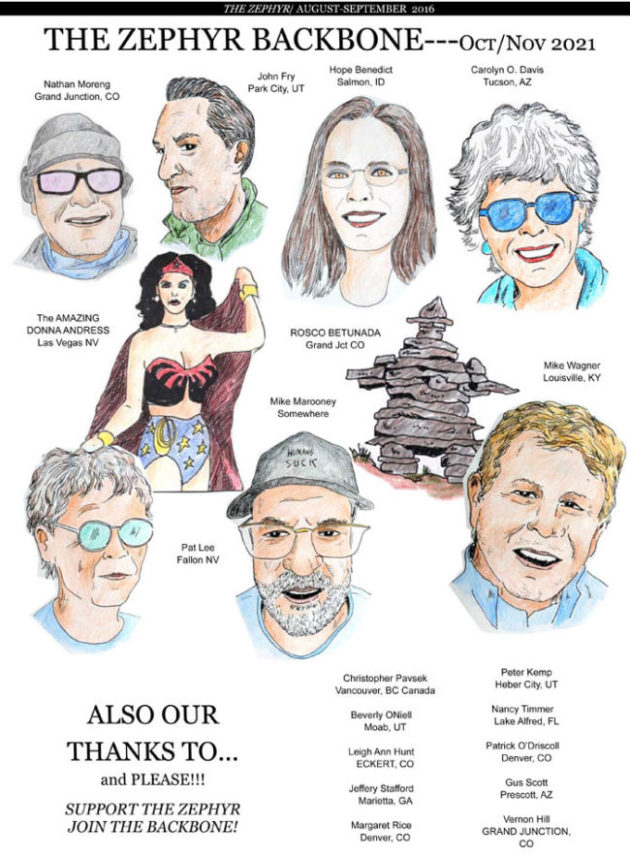
I’m very bummed, for selfish reasons, to hear this.
I’ve been making a film about the landscape of Utah–a cinematic reflection on the legacies of landscape photography in the Southwest, and as a sequel to James Benning’s great avant-garde film “Deseret”, as well as an excuse to travel the state aimlessly and repeatedly on grant money–and I had shot some (to my mind) lovely footage of the remnants of the gas station and its crazy winged roof as part of a collection of derelict “vernacular” landscapes and architecture.
I wanted to go back to shoot again– my audio was bad, because I had been scared away from the site by an unpleasant fellow in a very large pickup who told me I had nothing to look for there. Not sure what his deal was. But I have wanted to get back to capture the sound of the hundreds of swallows who nested under the roof. It was quite the racket! Covid has kept me away because of the border closures.
Last time I was there the parking lot was full of trailers and trucks and I didn’t shoot. That was in 2019.
What possible commercial development could we get there? I was thinking maybe another outpost of the lovely new hotel in Bluff? Or maybe a day spa. Or a car wash?
Sometime in the mid-1970s, I remember the biscuits and gravy as scrumptious! And I didn’t even like biscuits and gravy – except those.
I enjoyed this story and even though I was never there, It made me sad to see the empty lot. I enjoy seeing old buildings and those that are in complete ruins. It reminds me of a college lit class I took many years ago when I wrote about the old house I grew up in. My grandparents inherited the house when my maternal grandmother’s parents (immigrants from Hungary) passed away. We were the last family to live in the house and it remained empty for another forty years. It was in ill repair and vandals broke the windows and on one occasion someone tried to set it on fire one Halloween night. It was finally burned to the ground when our local fire department used it for training purposes. I wrote about the old hose in my essay and spoke about how many people thought it as an eye sore and didn’t appreciate the terrible shape it was in and how it didn’t fit into the landscape. I did my best to express how important it was to keep these old relics alive and appreciate the beauty for the time and effort it took to build this home. However, my professor didn’t like my essay and I received a “D.” He used that essay in our final exam and I was quite embarrassed to see that it was out there for all my classmates to read. Old places make me step back and ponder what went on inside. I want to venture inside and appreciate all it has to offer.
I’ve always enjoyed this area also each time passing by. The structures and history behind these places are amazing.
Like others, used to always stop and like to just look around, enjoy the old architecture and such.
I’ve found the same thing that someone else mentioned, stopping and taking interest just to look around anymore may not be the safest.
In final, hate to see these places eventually completely disappear, and nothing to be remember but the awesome photos that folks have provided above from the past. Then again, there is always Cisco, Utah. Ha Ha
When I was a little kid in the 1950s, my dad was a uranium miner I think and we lived in a trailer park that I was told was named La Sal. I went to school on the bus to Moab, and I can remember my brothers and I playing on the slick rock in the area. I don’t know if the trailer park later became the town of La Sal or was just in or near the town. I couldn’t have been more than 4 or 5, and there is no one left I my family who would remember.